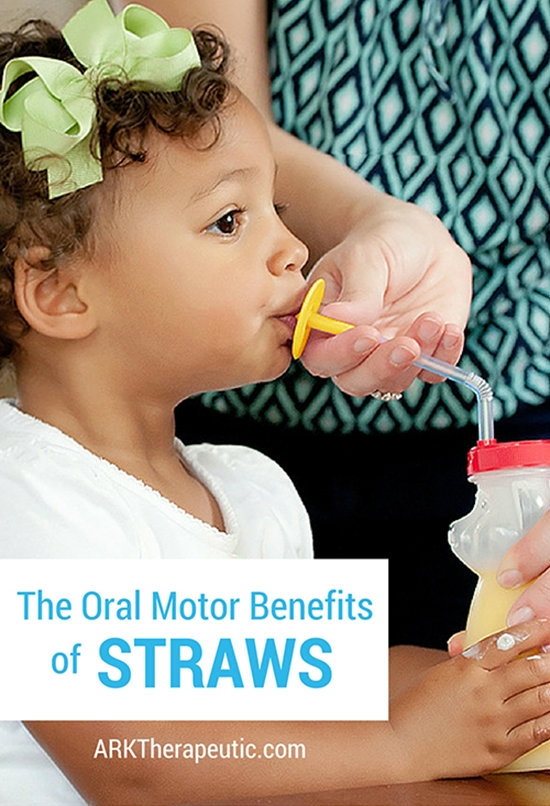The Oral Motor Benefits of Straws
Whenever a parent asks me what they can do to improve their child’s oral motor skills, one of my first questions is usually: Are they drinking from straws yet?
Drinking from a straw is a very simple yet effective way of improving one’s oral motor skills. It works on lip seal, tongue retraction, cheek strength, correct jaw position, suck-swallow-breathe coordination, consecutive swallows, and more. Sucking can also help some individuals organize, increase their attention, and soothe/calm themselves.
Straw drinking usually starts around 8-10 months of age. An easy way to teach beginners is with the Bear Bottle Kit, which has a special valve that keeps liquids at the top of the straw (so only a small amount of effort is required to drink). Or, older kids may prefer the Cip-Kup, which functions the same way but has a more ‘grown-up’ design.
Getting the child drinking from a regular straw alone is great step. However, there are lots of other straw activities you can do for even more oral motor benefit, such as:.
• Use a Lip Blok - Lip Bloks naturally work the mouth muscles and encourage proper oral positioning (tongue retraction, cheek tension, and lip closure). They also prevent the straw from going too far into the mouth, and they discourage biting on the straw for stability.
• Drink thicker liquids (like a milkshake) - these will be harder to suck up the straw, so the lips, cheeks, and tongue will have to tense more and work harder to draw it up the straw.
• Drink through bendy curved straws (like in the Straw Kit) - the more loops and bends, the further the liquid has to go and the harder you have to suck. And they're fun!
Ideally, only ¼” of the straw should go inside the mouth to drink. In this position, liquid is deposited in the front of the mouth where it is easier to manage and less likely to cause coughing/aspiration. And you also get a better oral motor workout (the tongue retracts more, the lips seal better, and the cheeks have more tension). Most children put a lot more of the straw inside their mouths, if not much more.
To test this: have the child drink from a regular straw. When the straw is in his/her mouth, pinch the straw just before the lips, remove it from the mouth, and note how much of the straw was inside the mouth.
All my best,
Debbie
Debra C. Lowsky, MS, CCC-SLP
This article is written by Debra C. Lowsky, MS, CCC-SLP for Ark Therapeutic's blog on 27th May 2016. You can find the original article here.
- Raana Smith







